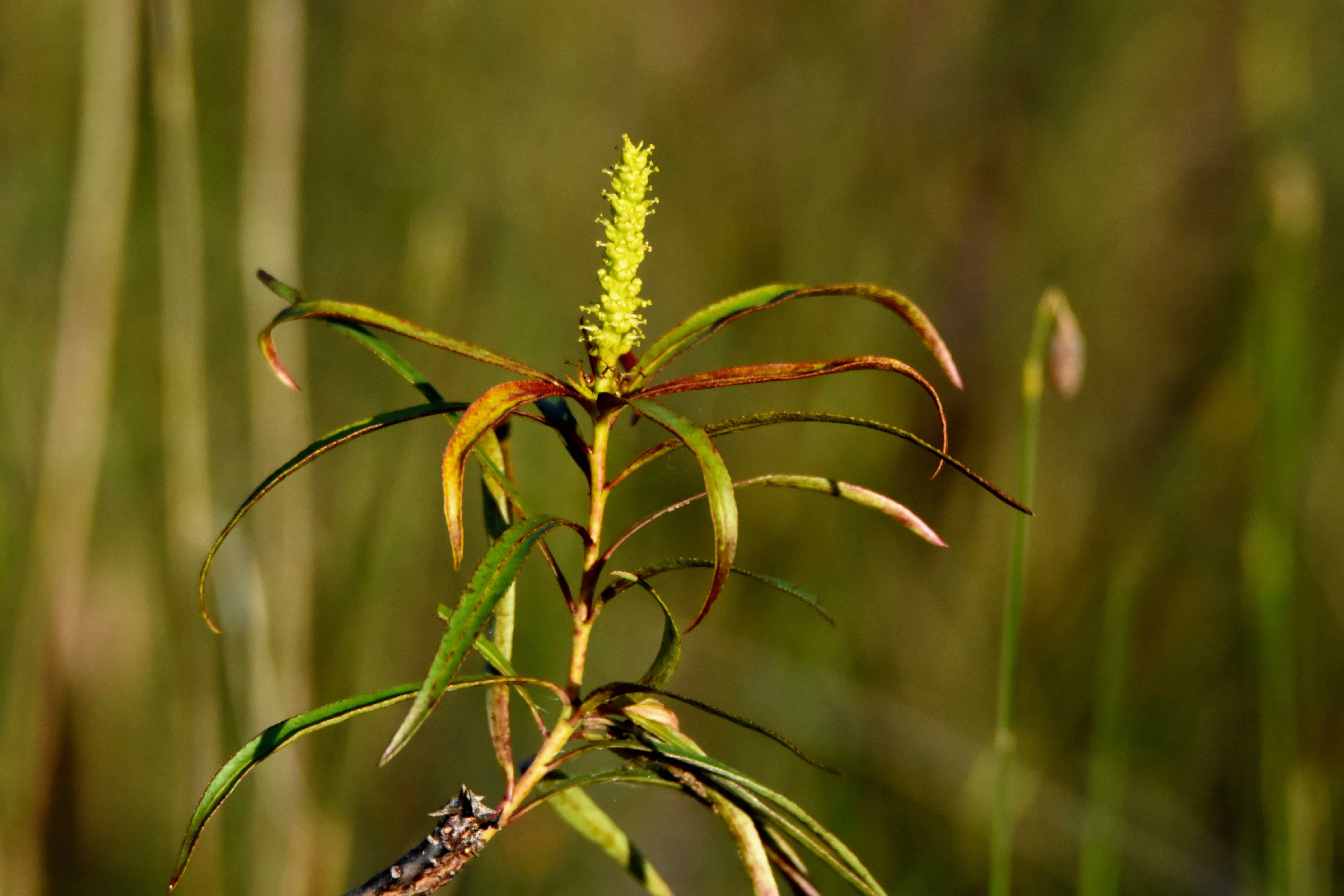
Water toothleaf, photographed at Pine Glades Natural Area, Jupiter, Palm Beach County, in February 2015.
Water toothleaf, Stillingia aquatica, is the light-weight of the wetlands. Literally. Another common name for the plant tells you why, but we'll save that for later.
Water toothleaf itself is attractive enough to catch your eye, with it's yellow flower stalks and red stems that bleed slightly into the long, lance-like leaves. It's a shrubby plant, usually with a single woody stem, but it can have more than just one. It can grow two to four feet tall, with the flowers and foliage concentrated at the top.
The leaves are simple, alternate on the stem, with small teeth along the edges. Flowers are yellow and small but are clustered on spikes that amplify their visual appeal. Water toothleaf flowers year-round, though in parts of its range, it blooms early to mid-spring, setting fruit into summer and fall. It is a perennial. As the name implies, water toothleaf likes it wet. It's found in flatwoods, wet prairies, along canals and drainage ditches — pretty much anywhere there is shallow, standing water throughout most of the year. It does not tolerate drought. Water toothleaf is a Florida native, found in most of the state's 67 counties, including all of South Florida. It's also found in Alabama, Georgia and South Carolina.
Water toothleaf has a better known cousin called queen's delight, Stillingia sylvatica, that is also commonly found throughout Florida and a good chunk of the United States. Both plants, according to Roger Hammer's Everglades Wildflowers: A Field Guide to the Wildflowers of the Historic Everglades, were used in traditional medicine to treat a variety of conditions, including syphillis, spasms, skin and liver problems. Both plants exude a milky sap that contains diterpene esters, which can irritate the mouth and mucous membranes.
Queen's delight is the better known of the two, because of its use in herbal medicine, including something called the Hoxsey Diet Therapy, touted as a cure for cancer, where it's simply called stillingia. According to Memorial Sloan Kettering Cancer Center, diterpene esters are toxic. There have been laboratory studies showing diterpene esters stopping the growth of cancer cells, but, according to Sloan Kettering, there's no evidence for the effectiveness of stillingia in treating humans.
Queen's delight also has a rather interesting, and bawdy, story behind its name, but we won't get into it here. The difference between the two plants can be found in the species names, aquatica vs. sylvatica, of water vs. of woods. Our guy, water toothleaf, is found in watery habitats, while queen's delight is more likely to be found in upland places.
Water toothleaf is a member of Euphorbiaceae, the spurge family, which includes poinsettia (another plant with sap that contains diterpene esters). One other common name for this plant is corkwood, so called because its soft, woody stem is so light it floats. Fishermen used it to make bobbers. So now you know why we call it the light-weight of the wetlands.
Pine Glades Natural Area



